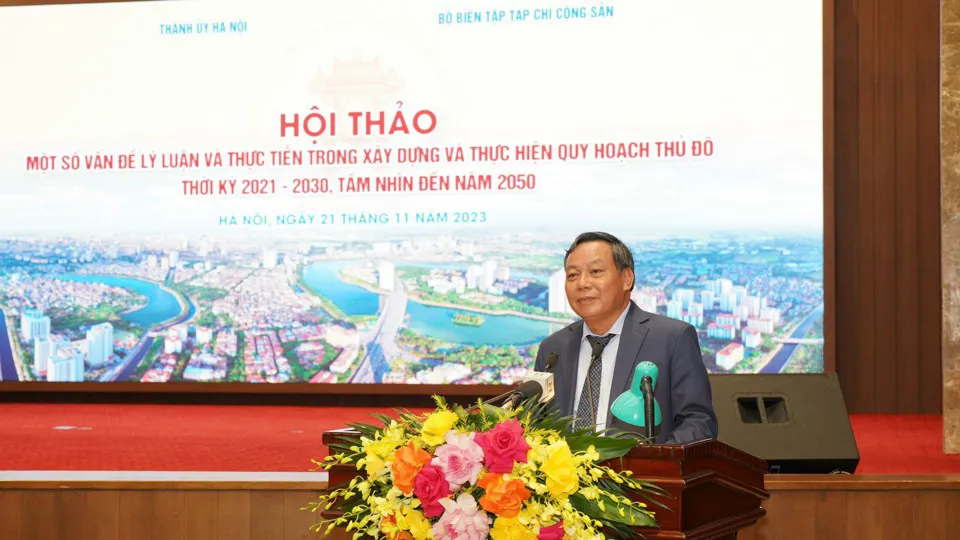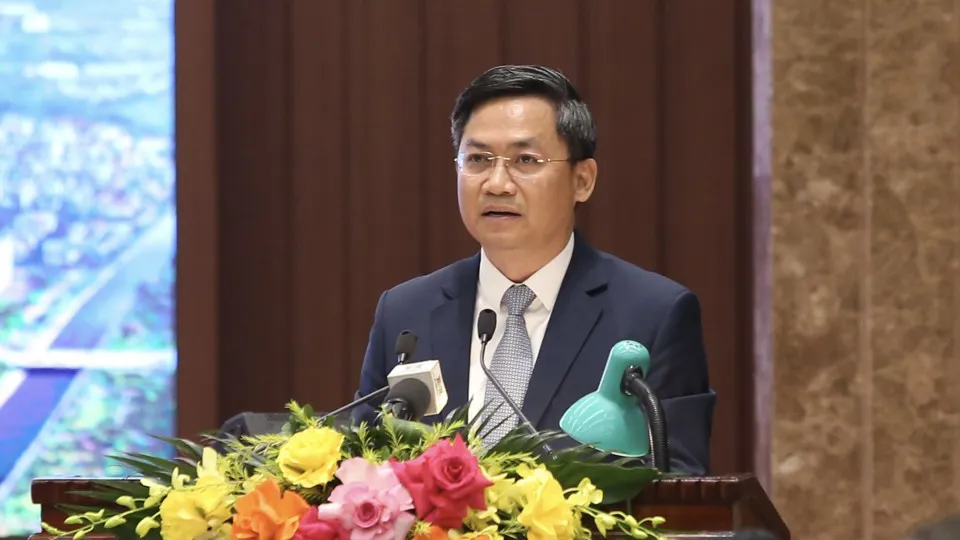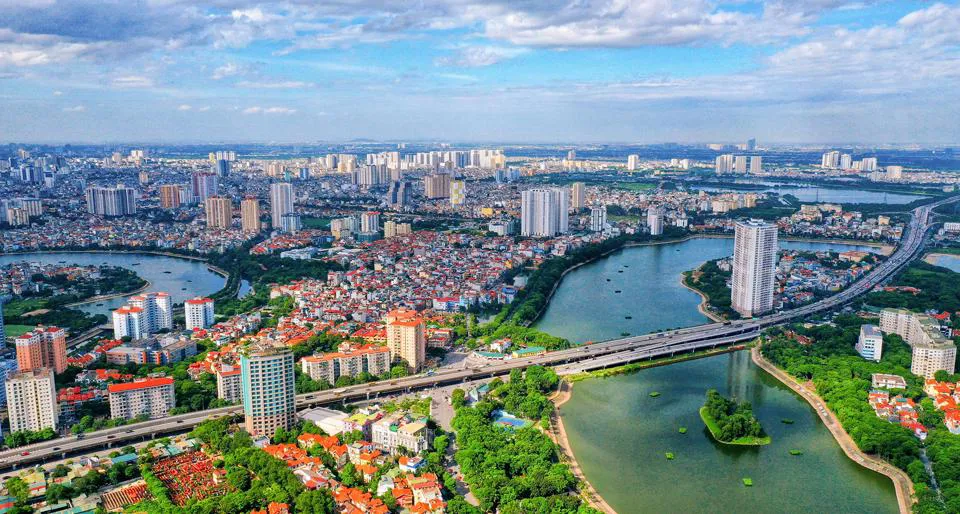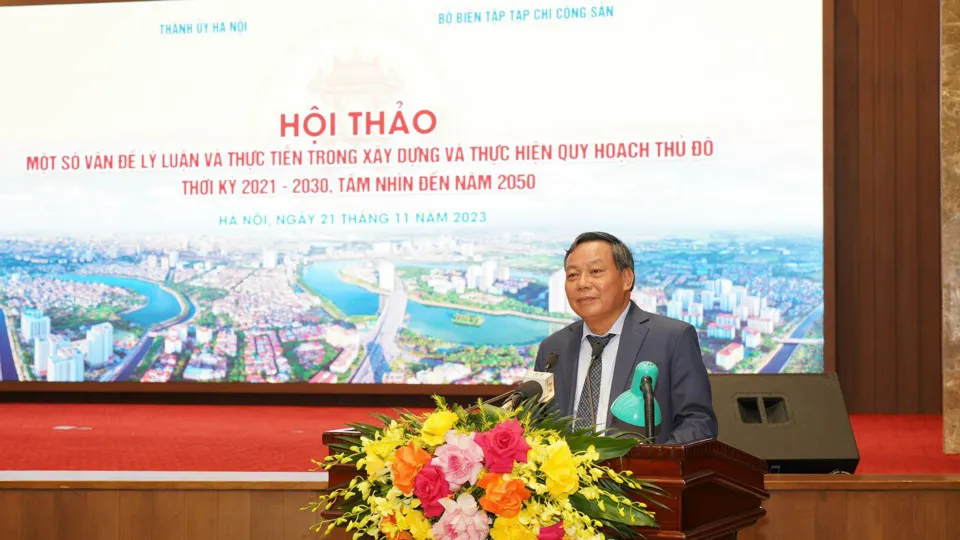Human capital, culture as foundation for Hanoi’s prosperity
Hanoi strives for economic growth while maintaining its green and peaceful environment where residents enjoy a high standard of living.
Human resources and culture remain the foundation, catalyst, and driving force for Hanoi's development and prosperity, Vice Chairman of the Hanoi People’s Committee Ha Minh Hai said at the scientific conference titled “Theoretical and Practical Aspects in the Formulation and Execution of the Hanoi Capital Planning for the 2021-2030 period, with a vision for 2050” held today [November 21].
| Overview of the conference. Photos: The Hanoi Times |
According to the city’s leader, the workshop was planned to bring important concerns to light and continue to collect creative ideas and inventive planning solutions.
“Emphasis is placed on breakthrough concepts, focal points, and the efficient and sustainable mobilization of resources to put the plan into action effectively,” Hai said.
He outlined that, based on the draft planning, Hanoi is set to be organized into five socio-economic development zones and five designated spaces for development (cultural space, construction space, underground space, green space, and digital space). The plan includes directions for industries, fields, and geographies, concentrated along five economic corridors and belts, and a comprehensive transport infrastructure system (ring road and urban railway system).
| Vice Chairman of the Hanoi People's Committee Ha Minh Hai. |
The draft also provides for the establishment of two cities under the jurisdiction of the capital, envisioning a modern, civilized, globally connected capital with unique economic, social, and cultural characteristics. This includes a green and fresh environment, aiming to provide residents with a high quality of life.
In addition, the capital's planning focuses on five key pillars of development: Culture, people, and thousand-year-old cultural heritage; the development of a green economy and digital economy; synchronized and modern connectivity infrastructure; a digital society, smart cities, and advancements in science, technology, and innovation.
Nguyen Ngoc Ha, Deputy Editor-in-Chief of the Communist Review, echoed Hai's sentiment, adding that culture is the most important factor to take into account when planning the capital.
"Hanoi is planned to be a heritage city, rich in national identity, embodying the essence of a thousand-year-old capital of civilization. The capital should become a creative city, boasting a developed cultural industry, a smart city, and a destination for cultural and culinary tourism,” said Ha.
As a high-quality service center, Hanoi remains a popular choice to host annual international cultural events.
Ha expected that Hanoi would continue to pursue economic growth while preserving its serene ambiance, characterized by a proud, refined, loving populace that embodies Vietnamese culture, conscience, and human dignity.
Public participation plays key role in development
| A corner of Hanoi, the capital city of Vietnam. File Photo |
During the conference, Phung Huu Phu, former Member of the Party Central Committee and former Standing Vice Chairman of the Central Theoretical Council stressed the importance of a deep and practical understanding of capital planning to exemplify the city's development philosophy.
"In essence, these are the key concepts and significant perspectives that guide and inspire the community and its people to achieve the goal of capital development successfully," stated Phu.
He listed the capital's development philosophy in five clauses and twenty words: "Glowing talent - Unleashing knowledge - Spreading humanity - Natural harmony - Progressing with the times."
Phu emphasized the need for this philosophy to be expressed and thoroughly understood throughout the entire process of planning and implementing the Capital's development.
According to Bui Tat Thang, former Director of the Institute of Development Strategy under the Ministry of Planning and Investment, the essence of planning lies in discussions about the future and development aspirations of a country, region, and locality through spatial positioning.
Hanoi is concurrently undertaking three interrelated tasks: formulating Capital Planning, adjusting General Planning, and developing the amended Capital Law.
“Addressing all three tasks simultaneously presents a valuable opportunity to construct and develop the Capital in the upcoming period,” Thang said.
In this context, Thang noted that capital planning provides an essential foundation for development orientation and spatial positioning, allowing for adjustments to be made under general construction planning.
“To implement these plans, the Capital Law will establish a legal foundation for specific mechanisms and institutions. This legal framework aims to ensure that the ideas and goals identified in the plans are effectively put into practice,” Thang said.
Vice President of National Economics University Hoang Van Cuong on behalf of the Capital Planning Consulting Consortium identified five critical "bottlenecks" currently hindering the development of the Capital.
These bottlenecks include the absence of proper institutions, unsynchronized infrastructure—particularly in public transport and underdeveloped urban railways—lack of accompanying urban planning and regulations, environmental pollution and inadequate flood prevention regulations, and the limited capacity, awareness, and sense of responsibility among enforcement staff in the management apparatus.
“The latter are often hesitant and reticent, which hinders their ability to create groundbreaking initiatives, think boldly, and act decisively in fulfilling their public duties,” Cuong said.
In guiding the planning of Hanoi Capital for the period 2021-2030, with a vision to 2050, Cuong proposed five overarching perspectives for its development.
Specifically, the primary viewpoint emphasizes rapid, sustainable, creative, and inclusive development, aiming for the Capital to become a growth pole with a pervasive and leading role. It should drive the development of the Red River Delta, acting as a catalyst in the north and the entire country, creating a prosperous image and enhancing the country's position on the international stage.
Furthermore, it should serve as a model for regional development, surpassing the country's targets for achieving industrialization and development goals.
| Vice Secretary of the Hanoi Party Committee Nguyen Van Phong. |
In his closing remarks at the conference, Deputy Secretary of the Hanoi Party Committee Nguyen Van Phong expressed gratitude for the valuable presentations and contributions. He acknowledged the shared sentiment and responsibility of the experts, scientists, and delegates for the beloved capital, Hanoi.
Phong highlighted that Hanoi is actively pursuing three major tasks to realize the objectives outlined in Resolution 15-NQ/TW of the Politburo, which focuses on developing Hanoi until 2030. These tasks involve amending the Capital Law, preparing the capital planning, and adjusting the overall construction plan of Hanoi.
He emphasized the transformative nature of Resolution 15-NQ/TW, which sets Hanoi on a path to compete with the capitals of developed countries in the region and aims to be a globally connected city by 2045.
"Hanoi is committed to participating in global competition rather than merely competing with other provinces and cities within the country," said Phong.
To facilitate the preparation of the Capital Planning, the city has established a Steering Committee and organized study trips to various countries worldwide. Additionally, it has conducted seminars, discussions, and working sessions. A recent scientific conference brought together representatives from 80 academic institutions, universities, and colleges in the capital, gathering diverse opinions from experts, scientists, and researchers.
Deputy Secretary Phong mentioned that following the conference, the city will assimilate all comments and presentations, emphasizing the wealth of content and the quality of articles received.
The city aims to garner further input from agencies, units, and organizations, especially experts and scientists, to contribute to the revised Capital Law, the adjustment of the capital planning, and the overall construction plan of Hanoi.
"The ultimate goal is to develop comprehensive plans that align with contemporary development trends and ensure high feasibility," Phong noted.















